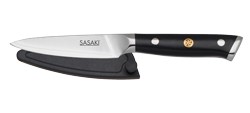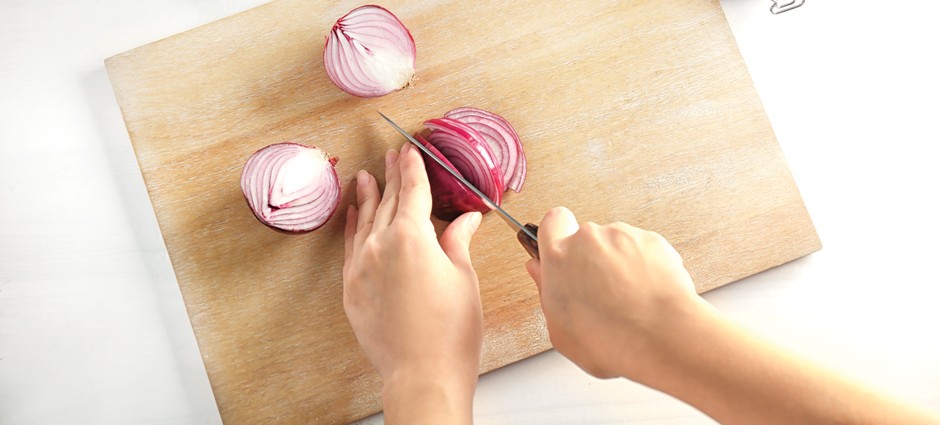A good knife is one of the most important tools in the kitchen. The experts at Sasaki Masuta, a high-quality Japanese knife manufacturer, share the essentials on taking care of your kitchen knives to keep them ready and able to prep any and all ingredients.
Choose a High-Quality Knife
When choosing a knife, look for a fully forged knife with a full-tang construction—the steel extends from the tip of the knife blade to the end of the handle—and a high-carbon Japanese or German steel blade. This makes for a stronger, better-balanced knife.
The higher the carbon content in the steel, the sharper the steel, as it will hold a longer- lasting edge.
Use a Cutting Board with a Nonslip Grip
Always cut your food on a plastic or wood cutting board with a nonslip grip to ensure it doesn’t move while cutting. Glass cutting boards are not recommended.
When cutting meat, a wood cutting board with a trench to capture the juices works best.
A plastic cutting board is great for cutting fruits and vegetables; the plastic will not dull the knife blade. Plus, it’s nonporous and dishwasher-safe.
Clean, Sharpen & Store Kitchen Knives Properly
Keeping your kitchen knives clean, sharp and safely stored to protect the blade (and your fingers) will prolong their lives.
To Clean
Always hand-wash knives with warm, soapy water, and dry immediately with a clean, dry cloth. Never soak or submerge knives in water, and never put knives in the dishwasher (unless it’s clearly stated to do so on the packaging). In the dishwasher, knives can be damaged by acid, food remnants and chemicals; electrolytic oxidation caused by various metals in the same wash; prolonged high temperatures; and the drying cycle.
To Sharpen
A sharp knife is a safe knife. Sharpen your knives regularly to ensure that they are ready for food preparation. There are many ways to sharpen a knife; choose the method you are most comfortable with: sharpening steel, handheld sharpener, whetstone or electric sharpener. Some knives even come with a sharpener built into their storage unit, such as a wood block or a plastic sheath.
To Store
Always store your kitchen knives in a safe place, such as a cutlery block, sheath, in-drawer organizer or magnetic bar. This will protect the blades—and your hands—from damage.
Try: Sasaki Masuta 3.5-Inch Paring Knife


